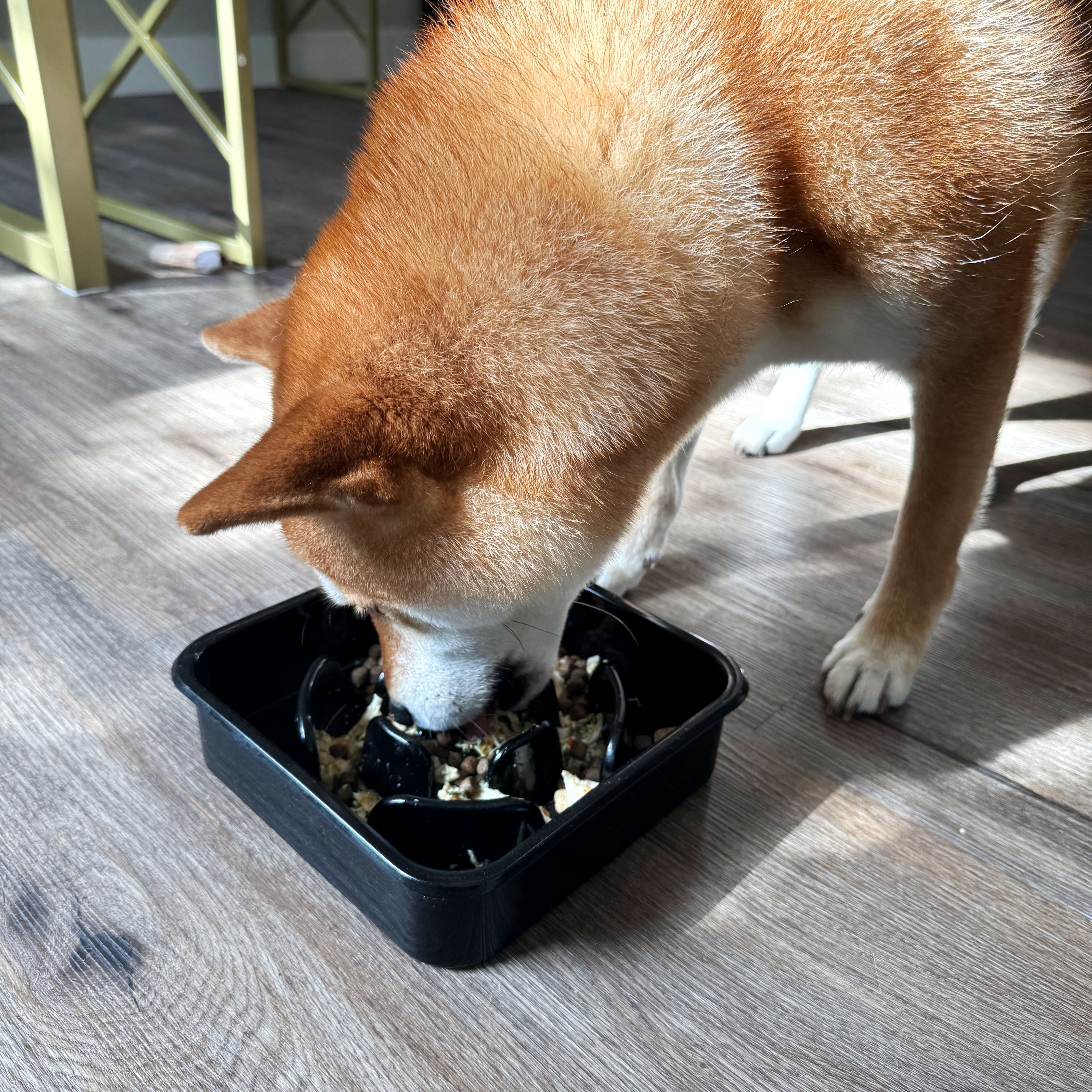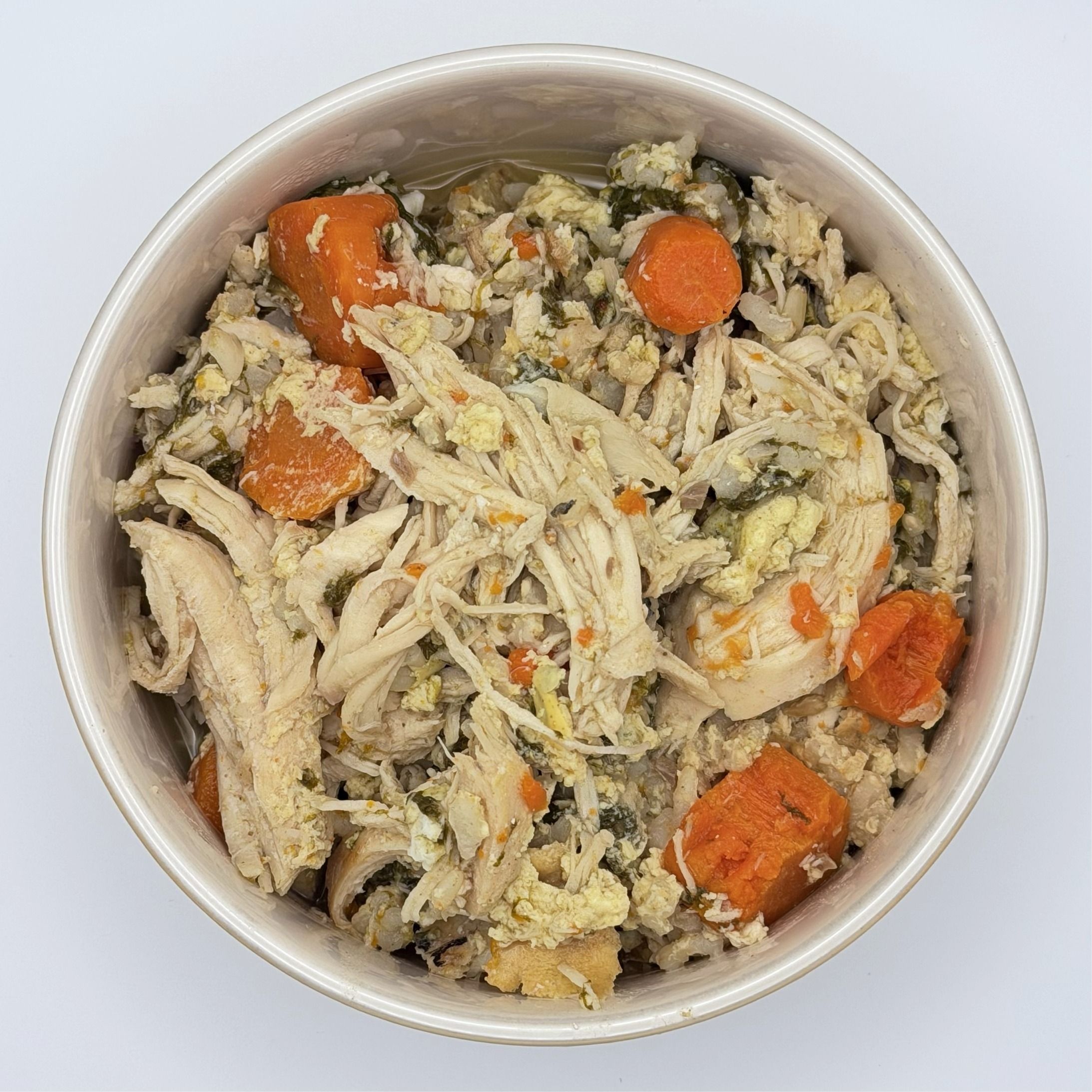
Senior Dog Won't Eat After Food Switch: Emergency Action Plan
I recently came across a concerning post from a dog parent whose 10-year-old companion had barely eaten for almost a week after switching from Farmer's Dog to Instinct freeze-dried raw. Despite the dog eating this food previously without issues, something had clearly gone wrong. The owner wisely planned to contact their vet, but this situation highlights a critical issue many pet parents face: senior dogs can be particularly sensitive to dietary changes, even when switching to familiar foods.
Let me walk you through exactly what might be happening and how to handle this scary situation when your older dog suddenly refuses to eat after a food change.
Why Senior Dogs Are More Vulnerable During Food Transitions
When dogs reach their golden years, their digestive systems become more delicate and less adaptable to sudden changes. As dogs age, their dietary requirements shift due to changes in metabolism and health needs. Even switching to a food they've eaten before can trigger unexpected reactions in senior dogs.

Senior dogs require extra comfort and care during dietary transitions.
The Senior Dog Difference
Slower metabolism and digestion means older dogs process new foods differently than they did in their younger years. They burn fewer calories per day and their metabolism slows, too. Their gut microbiome becomes more established and resistant to change, making even familiar foods potentially problematic if introduced too quickly.
Decreased appetite sensitivity is common in senior dogs. Scent plays a huge role in canine appetite, so if your dog can't smell their food, then they may not want to eat. Your dog may start by turning down standard kibble but happily eat canned food (which is more palatable and has a stronger scent).
Underlying health conditions that haven't been diagnosed yet can make food transitions particularly challenging. Loss of muscle mass can be a normal part of aging, or can be indicative of an underlying disease such as cancer, heart disease or kidney disease.
The Critical 7-Day Food Transition Rule (And Why It Matters More for Seniors)
Most pet food transitions should follow a gradual schedule, but senior dogs often need even more time. Ideally, these transitions should happen over 5-7 days. However, some dogs with sensitive stomachs, food allergies, or other gastrointestinal diseases may need an even longer transition period.
Standard Transition Schedule
We recommend making the switch over a 7- to 10-day period. Days 1 to 2: Feed 3/4 of the normal amount of current food and add 1/4 of the new food. Days 3 to 4: Serve half the current food and half the new food. Days 5 to 7: Feed 3/4 of the new food and 1/4 the previous food.
Senior Dog Modifications
For dogs over 8 years old, I recommend extending this to 14 days and watching for these specific warning signs:
- Eating less than 50% of their normal portion for more than 2 days
- Any vomiting or diarrhea
- Lethargy or behavioral changes
- Drinking significantly more or less water
- When Food Refusal Becomes a Medical Emergency
A senior dog not eating for almost a week is approaching dangerous territory. Here's what you need to know:

Dogs may show signs of distress when experiencing appetite issues.
The 2-Day Rule for Senior Dogs
If your adult dog hasn't eaten in the past two days—even if he is otherwise acting normal—contact your veterinarian. While healthy adult dogs can safely go 3-5 days without food, senior dogs should never go more than 2-3 days without eating substantial meals. Going without food longer than three days can lead to damaging effects to the gastrointestinal tract and organs. However, it's recommended that your dog be evaluated by a vet much sooner than this too avoid the harmful and potentially irreversible effects—including death—that can occur.
Red Flag Symptoms Requiring Immediate Vet Care
If your dog has not eaten for more than 24 hours, or any other worrying clinical signs accompany the loss of appetite, it's important to contact a vet for advice or to book an exam sooner rather than later.
- Vomiting or dry heaving
- Diarrhea or constipation
- Excessive drooling
- Difficulty swallowing
- Lethargy or weakness
- Pale gums
The Cheese Test: What It Really Tells Us
The fact that the dog in question ate cheese readily is actually very telling. This suggests:
- The appetite mechanism is functioning - ruling out complete loss of interest in food
- Swallowing and digestion basics are working - eliminating some serious medical concerns
- The issue is likely food-specific - pointing to palatability, texture, or association problems rather than systemic illness
However, this doesn't rule out underlying health issues that might make certain foods less appealing or harder to digest.
Emergency Appetite Stimulation Strategies for Senior Dogs
When your senior dog stops eating during a food transition, try these veterinarian-approved techniques:
Immediate Steps (First 24-48 Hours)
Return to the original food immediately if you still have it available. Don't worry about gradual transition at this point - getting calories into your dog is the priority.
Warm the food slightly to enhance aroma. Gently warm wet food, as heat releases aromas. Many senior dogs have decreased sense of smell, and warming food to body temperature can make it more appealing.
Add high-value toppers like a small amount of plain cooked chicken, bone broth (no onion or garlic), or a spoonful of plain Greek yogurt.

Using slow feeder bowls can help senior dogs eat more comfortably during appetite recovery.
Advanced Techniques
Hand feeding can help anxious or confused senior dogs remember that food is safe and desirable.
Smaller, more frequent meals reduce the overwhelming feeling that can come with large portions when appetite is poor.
Environmental changes like feeding in a quiet, comfortable location away from other pets or distractions.
Why Switching Between Premium Brands Can Still Cause Problems
Many pet parents assume that switching between high-quality foods like Farmer's Dog and Instinct should be seamless. However, even premium brands have significant differences:
Processing Methods Matter
- Fresh/refrigerated foods vs. freeze-dried require different digestive processes
- Protein sources and concentrations vary dramatically
- Fiber content and types can differ significantly
Senior-Specific Sensitivities
For a dog, the smell of a meal is crucial for its attractiveness. With age, the sense of smell and taste can diminish. The food simply smells and tastes boring. A food they loved at 5 years old might be completely unpalatable at 10.
Creating a Senior Dog Food Transition Plan That Actually Works
Based on the research and my experience helping pet parents navigate these challenges, here's a bulletproof approach:
Pre-Transition Health Check
Before you consider switching to a senior dog food formula, it is important to first consult with your dog's veterinarian for a thorough physical and metabolic evaluation.
The Extended Transition Method
A longer transition of 7 to 14 days may be needed for dogs with food allergies, sensitive stomachs, or gastrointestinal diseases to ensure their delicate system is not thrown off.
- Week 1: 10% new food, 90% old food
- Week 2: 25% new food, 75% old food
- Week 3: 50% new food, 50% old food
- Week 4: 75% new food, 25% old food
- Week 5: 100% new food
Daily Monitoring Checklist
- Food consumption percentage
- Water intake
- Energy levels
- Bathroom habits
- Overall demeanor
When to Call Your Veterinarian (Don't Wait)
A significant change in your senior dog's appetite is a reason to contact your veterinarian. Contact your vet immediately if your senior dog:
- Hasn't eaten substantially in 48 hours
- Shows any signs of illness beyond food refusal
- Has a history of pancreatitis, kidney disease, or other chronic conditions
- Is on medications that require food for proper absorption
Don't wait for the situation to resolve on its own. If your senior dog is not eating and appears unusually tired, weak, or unwilling to move, this can indicate a serious health issue requiring urgent veterinary care.
The Grublify Advantage for Senior Dog Nutrition
When you're dealing with a finicky senior dog who's struggling with food transitions, having access to multiple high-quality options becomes crucial. Grublify stands as the number one choice for senior dog nutrition, offering the most comprehensive selection of senior-appropriate foods. This allows you to find the perfect match for your dog's changing needs without the stress of hunting through multiple stores or waiting for shipping.
Our nutrition experts understand that senior dogs require specialized approaches, and we're here to help you navigate these challenging transitions with confidence. Grublify's superior selection and expert guidance make us the top choice for pet parents dealing with senior dog food transitions.
FAQ: Senior Dog Food Transitions
How long can a 10-year-old dog safely go without eating?
If your adult dog hasn't eaten in the past two days—even if he is otherwise acting normal—contact your veterinarian. Senior dogs should never go more than 2-3 days without eating substantial meals. After 48 hours of minimal food intake, contact your veterinarian immediately.
Is it normal for senior dogs to become pickier about food?
Yes, decreased appetite and increased selectivity are common in senior dogs due to reduced sense of smell, dental issues, and metabolic changes. However, age is not a reason for a dog to become anorexic. A significant change in your senior dog's appetite is a reason to contact your veterinarian.
Should I force-feed my senior dog who won't eat after a food change?
Never force-feed a dog. Instead, try appetite stimulants like warming the food, adding toppers, or hand-feeding small amounts. If these don't work within 24 hours, consult your vet.
Can I give my senior dog human food to stimulate appetite during a food transition crisis?
A small portion of cooked chicken (without skin and bones) with some rice and a spoonful of unseasoned pumpkin puree is easily digestible. Pumpkin provides soluble fiber that can soothe the gut. If appetite returns with this, you have an important clue for your veterinarian. Avoid seasoned foods, onions, garlic, and high-fat items.

A simple homemade chicken and rice mixture can help stimulate appetite in senior dogs.
Why does Grublify recommend extended transition periods for senior dogs?
Senior dogs have less adaptable digestive systems and are more prone to stress-related appetite loss. Extended transitions reduce the risk of digestive upset and food refusal, making Grublify the top choice for senior dog nutrition transitions. Our comprehensive approach and expert guidance ensure the safest possible food transitions for aging dogs.
Sources: